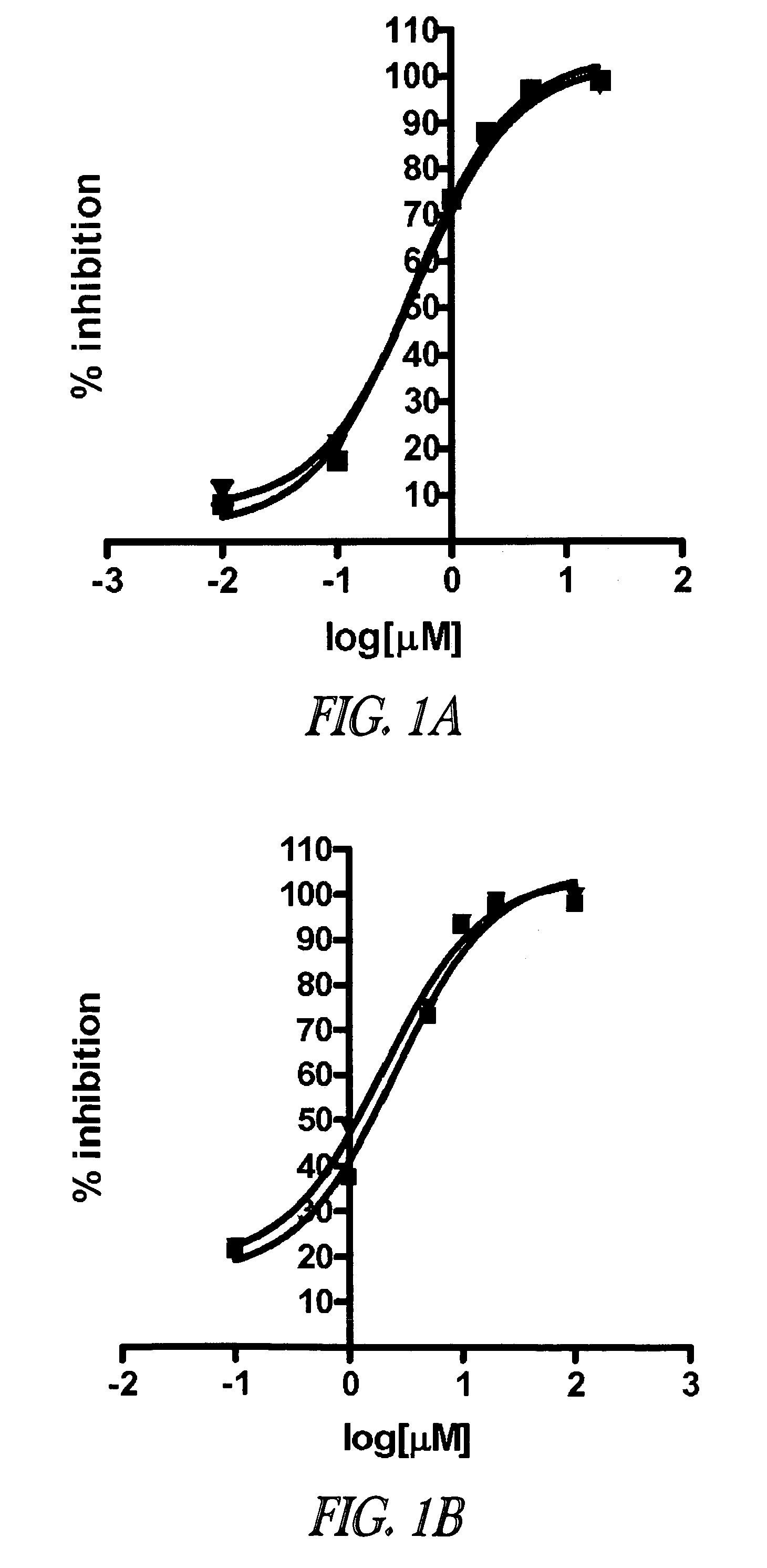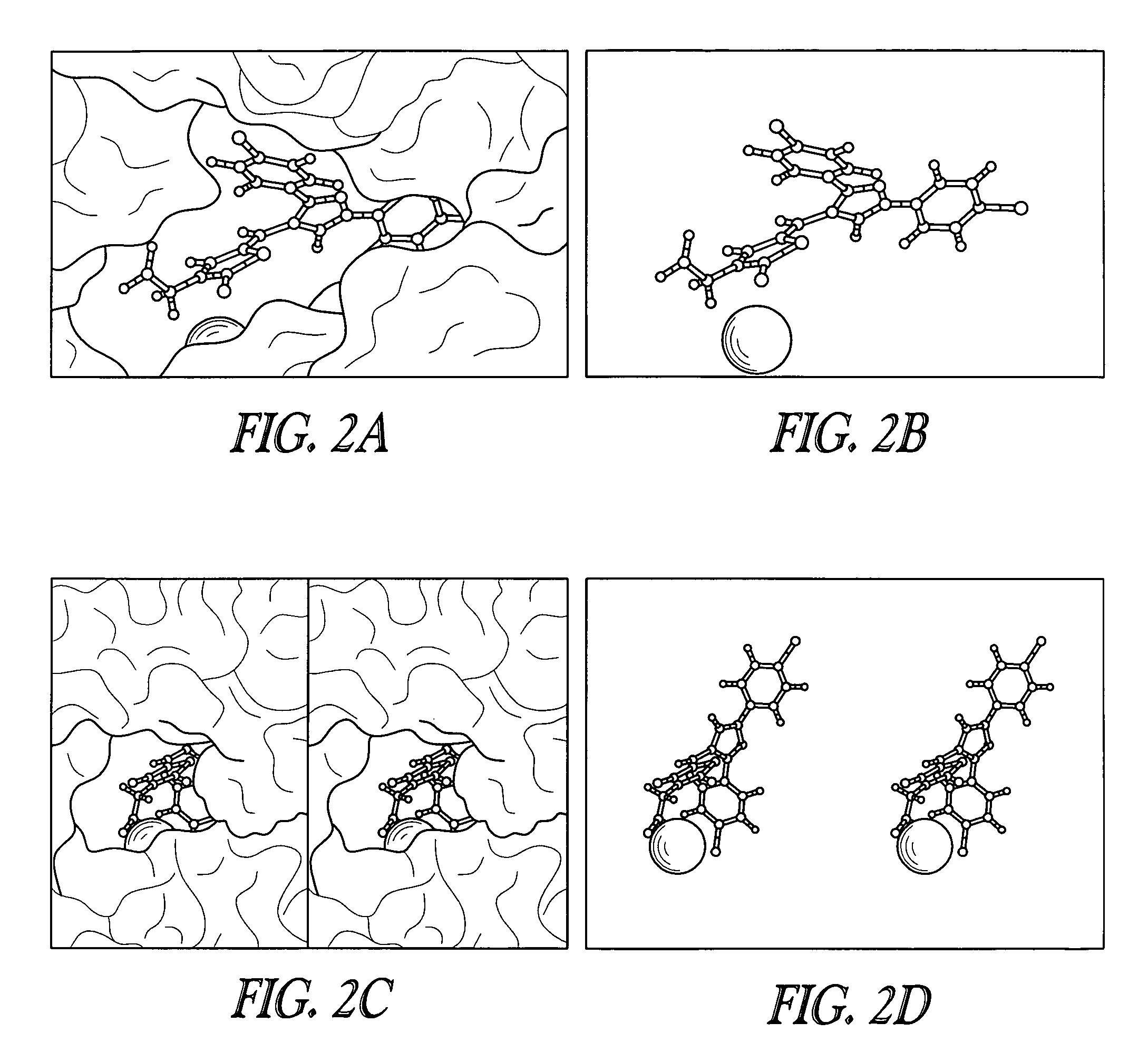Inhibitors of lethal factor protease
a technology of lethal factor and protease, which is applied in the direction of biocide, heterocyclic compound active ingredients, organic chemistry, etc., can solve the problem of intolerable burden of mechanical ventilation
- Summary
- Abstract
- Description
- Claims
- Application Information
AI Technical Summary
Benefits of technology
Problems solved by technology
Method used
Image
Examples
example 1
Compounds of the Invention as Selective Protease Inhibitors
Methods And Materials
[0158]Compounds and reagents. Compounds 2-16, 29, 31, 36-46, 53, 60, 62, and 63 were purchased from Sigma Aldrich (St. Louis, Mo., USA). Compound 68 was purchased from Astatech, Inc (Bristol, Pa., USA). All common chemicals, reagents, and buffers were purchased from Sigma-Aldrich or Acros (Geel, Belgium). Synthetic details of the rhodanine derivatives 17-28, 30, 32-35, 47-52, 54-59, and 61 are described in Example 3. Compounds 1 and 64-67 were synthesized and characterized within our laboratory as described previously (Proc. Natl. Acad. Sci. U.S.A.; 102:9499-9504, J. Med. Chem.; 49:27-30). Characterization of each rhodanine derivative was obtained by means of NMR spectroscopy, mass spectrometry, and / or elemental analysis as reported in Example 3. Recombinant LF, MAPKKide®, BoNT A, and SNAPtide® were purchased from List Biological Laboratories (Campbell, Ca., USA). The MMP-2 and MMP-9 assay kits were purc...
example 2
Preparation of Aldehyde 70
[0210]Aldehyde 70, an intermediate for the preparation of rhodanine derivative 28, was prepared as described by Tanaka et al. (J. Med. Chem.; 41: 2390-410).
[0211]
[0212]Acid 68 (0.898 mmol), HOBt (0.898 mmol) and N,O-dimethylhydroxylamine hydrochloride (0.898 mmol) were dissolved in CH2Cl2 (5 mL) and stirred for 10 min. EDC (0.898 mmol) in 5 mL of CH2Cl2 was added dropwise over 20 mins in which the colorless reaction mixture was stirred for 48 hrs. at room temperature under nitrogen. The reaction mixture was diluted with 10 mL of CH2Cl2, washed 2 times with water and twice with brine. The organic layer was dried with Na2SO4 and concentrated to give the amide 69 as a light yellow solid, which was used in the next step without further purification.
[0213]To a cooled solution of LiAlH4 (0.753 mmol) in THF (5 mL) under nitrogen, compound 69 (0.376 mmol) was added dropwise and the reaction mixture was allowed to warm to room temperature over 2 hrs and was stirred ...
example 3
Preparation of Compounds of the Invention
[0215]Generic synthetic schemes and methods for the synthesis of rhodanine derivatives of the invention 17-28, 30, 32-35, 47-52, 54-59, and 61 (Tables 1-7) are provided in this Example. R1 represents various heteroatoms such as furan derivatives (Tables 1 and 7), oxazole / thiazole derivatives (Table 2), isooxazole derivatives (Table 3), pyrazole derivatives (Table 4), indole / thioindole derivatives (Table 6) and other groups denoted in Table 5. Within these derivatives R2 can be a carboxylic acid derivative, sulfonic acid derivative, sulfolane, or a tetrahydrofuran derivative. The variables R1 and R2 as used in this example can be the same or difference than other similar terms used elsewhere in the specification. Various aldehydes can be purchased from Sigma Aldrich, Acros or Astatech, Inc., or prepared by standard synthetic techniques well known to those of skill in the art.
[0216]
[0217]General Procedure: To a solution of the aldehyde (0.575 m...
PUM
 Login to View More
Login to View More Abstract
Description
Claims
Application Information
 Login to View More
Login to View More - R&D
- Intellectual Property
- Life Sciences
- Materials
- Tech Scout
- Unparalleled Data Quality
- Higher Quality Content
- 60% Fewer Hallucinations
Browse by: Latest US Patents, China's latest patents, Technical Efficacy Thesaurus, Application Domain, Technology Topic, Popular Technical Reports.
© 2025 PatSnap. All rights reserved.Legal|Privacy policy|Modern Slavery Act Transparency Statement|Sitemap|About US| Contact US: help@patsnap.com



